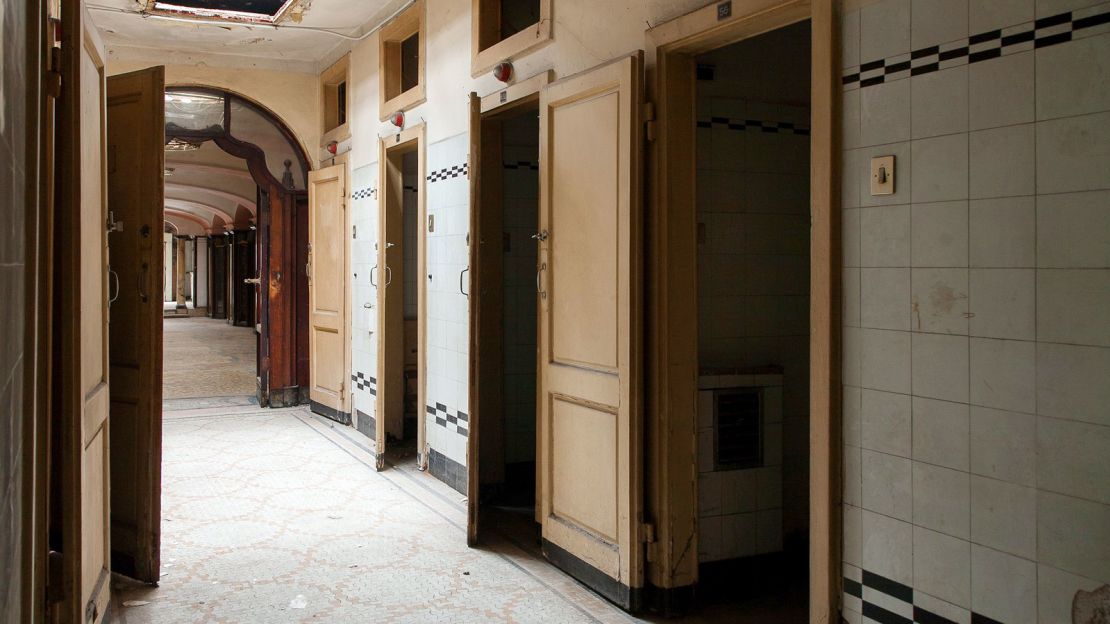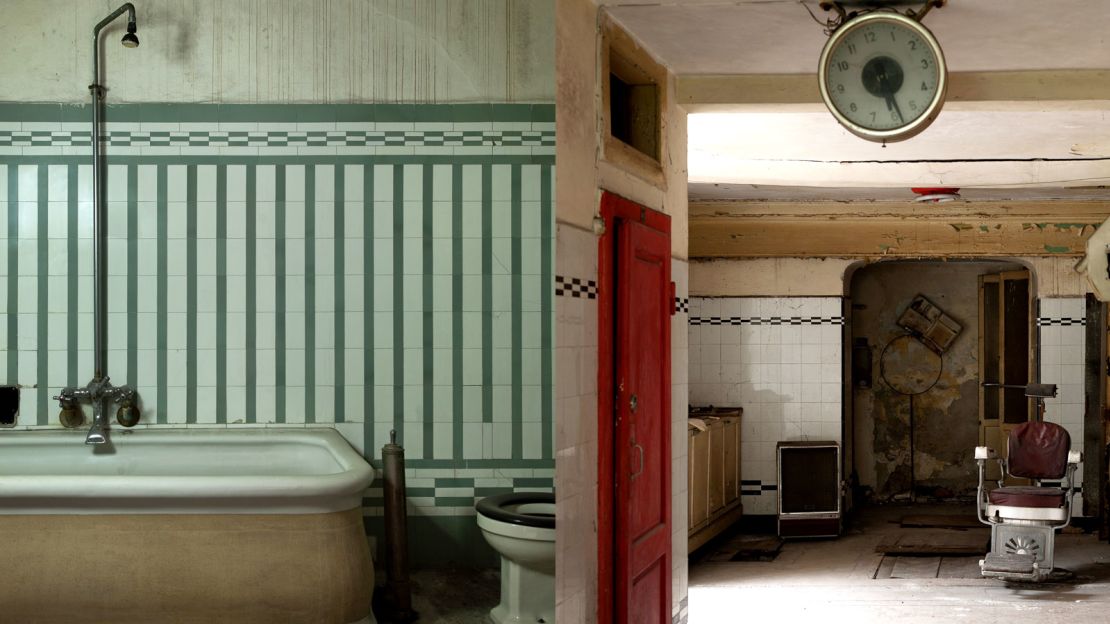Modern bathroom facilities may have made life easier and cleaner, but they’ve also destroyed a big chunk of Italy’s artistic heritage.
Before homes were installed with the running water, showers and bathtubs we today take for granted, even rich Italians visited public wash houses. In the country’s fashion capital Milan, this was, of course, done in style.
A regular destination for many Milanese was the beautiful Albergo Diurno Venezia – a kind of “day hotel” without bedrooms, where the city’s high society mingled with its great unwashed.
In the early decades of the last century, this subterranean Art Deco palace of cleanliness was one of Milan’s hottest destinations.
But as modern plumbing entered people’s homes, the Albergo was slowly abandoned.
It’s still there, though, behind a locked, rusty door in Milan’s Piazza Venezia metro station, hidden away from the thousands of oblivious commuters and tourists who pass by it daily.
“We had room for all social classes: elegant bourgeois ladies, young apprentices, old men, masons and even tramps queued outside,” says Rita Sorrenti, who for 15 years ran her father’s beauty parlor at the Albergo. “They wanted a curative pedicure, our specialty.”
Slow demise
In the 1920s, the Albergo was a vibrant institution in Milan, particularly adored by the gentry.
Here, citizens, travelers, students and workers could bathe, shower, shop, send telegrams, buy flowers and get haircuts and manicures.
The only thing they couldn’t do was sleep overnight.
Although its corridors are now filled with broken tiles and dust, the building is maintained by the FAI, Italy’s Environment Fund, which organizes occasional guided tours.
Today’s visitors can still enjoy the Albergo’s maze of elegant art deco architecture and columns, refined pottery, geometric tiles and lavish statues.
Its fountains, flanked by hygiene deities and once brimming with red fish, are still there too.
The Albergo suffered a slow demise.
Its baths closed in 1985, forced out of business by modern hygiene standards and dwindling enthusiasm for public bathing in unheated facilities.
By the late ’90s, just a few barbers remained – the last one shutting up his dilapidated shop for good in 2006.
But not all the past glory has vanished.
Behind closed doors, much of the Albergo’s history has been preserved.
Visitors can still see the 30 public “day baths” and pools, the barber shops, travel agencies, beauticians, post offices, bank, currency exchange stands, public telephones, luggage deposit, laundry, dressmaker, photograph booths, and clothing boutiques where suits and dresses could be rented for the day.
Italy’s 20 regions, dish by delicious dish
‘Underground Pompeii’

“It was a multi-service center with all imaginable facilities, very much like a modern airport or shopping mall today,” says the FAI’s Lucia Borromeo.
The Albergo Diurno has been dubbed an “underground Pompeii” for its frozen-in-time appearance.
Scattered everywhere are old newspapers, utility bills, postcards, worn-out jackets, umbrellas, torn handbags, barber brushes and even nail polish bottles.
It feels as if the owners could return any minute.
There’s also a lobby with plush sofas where typists served illiterate and infirm people who needed to send letters or telexes.
“Back at that time, even middle-class houses had no showers and bathtubs. These were a luxury, so people came here to wash on a daily basis,” says Borromeo.
But why build such a fashionable spot in the dark, below ground level? According to Borromeo, anything underground was considered modern, avant-garde and even futuristic in 1920s Milan – somewhat like today’s skyscrapers.
Initially, clients included business consultants, workers commuting from Milan’s provincial areas and politicians coming from Rome who wanted a change of clothes after a long and tiresome journey.
Later on, in the 1970s, it was increasingly used by homeless people.
Beyond Rome and Venice – 12 alternative places to visit in Italy
‘Punch in the gut’

“The Albergo Diurno was a very democratic place,” explains Borromeo.
“No matter your social position there were services for every purse. Baths were the most expensive, then came showers and last of all soothing foot basins for those who couldn’t afford to wash their entire body.”
The most luxurious bathrooms came with marble floors and a private toilet, a privilege few could afford.
Young “bagnine,” meaning “lifeguards” in Italian but with very different roles to their modern counterparts, were girls that accompanied clients to their pool. It was a buzzing place, packed with people who not only shared hygienic needs but also personal opinions and daily stresses.
“I remember once a priest got so mad at hearing people swear the whole time that he hung posters saying ‘cussing forbidden’ but in doing so he ended up cussing himself,” recalls Rita Sorrenti, who closed her parlor in 1996.
When Sorrenti stepped back into the Albergo Diurno after 20 years, she was overwhelmed by emotion.
“It was like a punch in the gut, my heart skipped a beat. It just sent so many images rushing back”.
Now, whenever the rusty door is reopened for FAI tour days, the Albergo attracts long lines of visitors. Among them are older people who remember their mothers taking them as children for a refreshing bath or to have their feet rinsed.
Such is Milan’s affection for the place that people’s memories and photos are now being collected by the FAI to help with a planned restoration that could give the Albergo a second life. The organization is hoping to raise funds needed to recover the baths, boutiques, barber shops and beauty parlors by opening training schools for beauticians and hairdressers.
“It’s a piece of the city’s history and identity that can’t be wasted,” says Sorrenti. “For more than 60 years it was our point of reference, Milan’s theater.
“It’s a shame nobody cared about its downfall.”
Beyond Milan: 8 alternative day trips from Italy’s fashion capital
Shopping in Milan: 8 boutiques with a very personal touch
Abandoned luxury hotels that you can’t afford to miss
Silvia Marchetti is a Rome-based freelance reporter. She writes about finance, economics, travel and culture for a wide range of media including MNI News, Newsweek and The Guardian.






